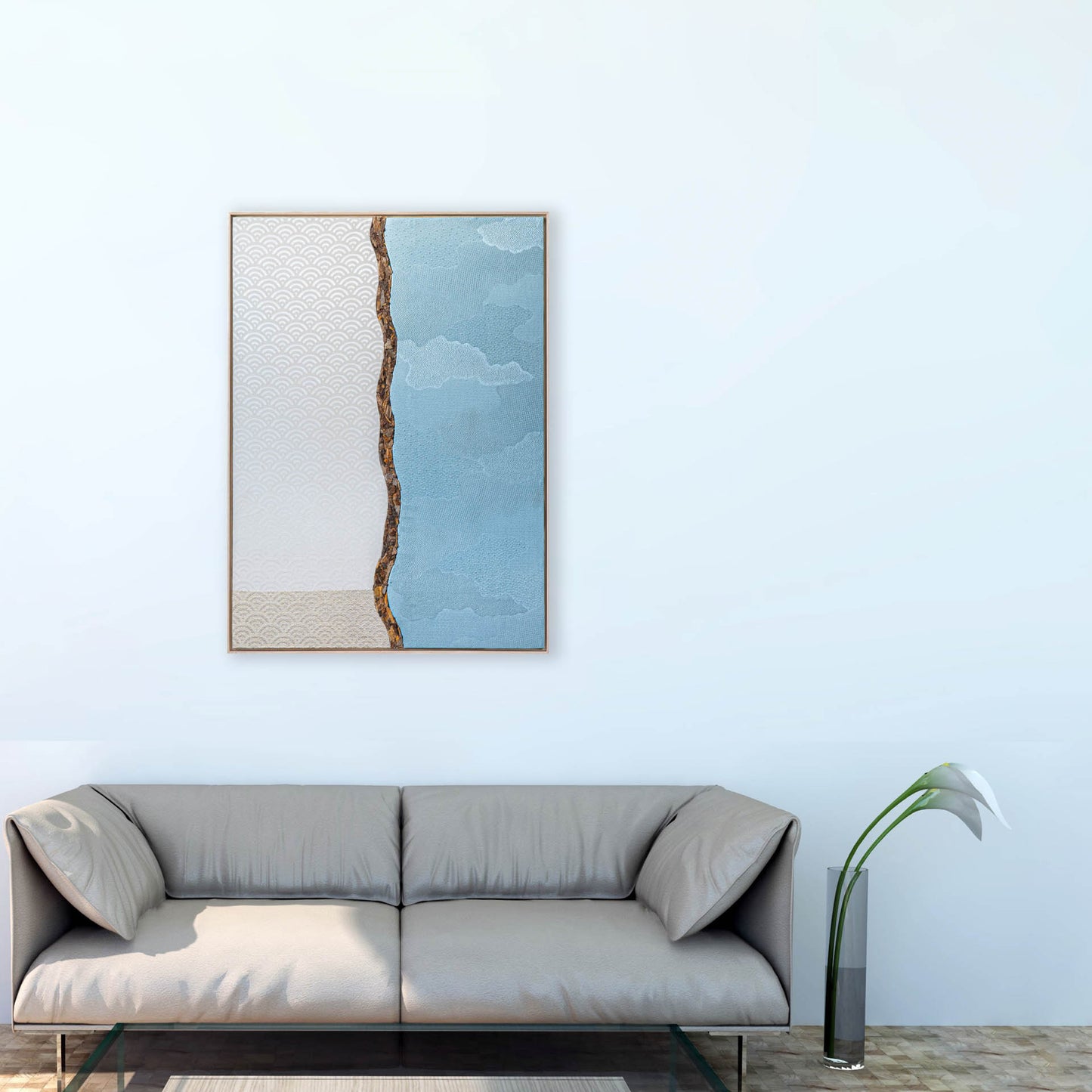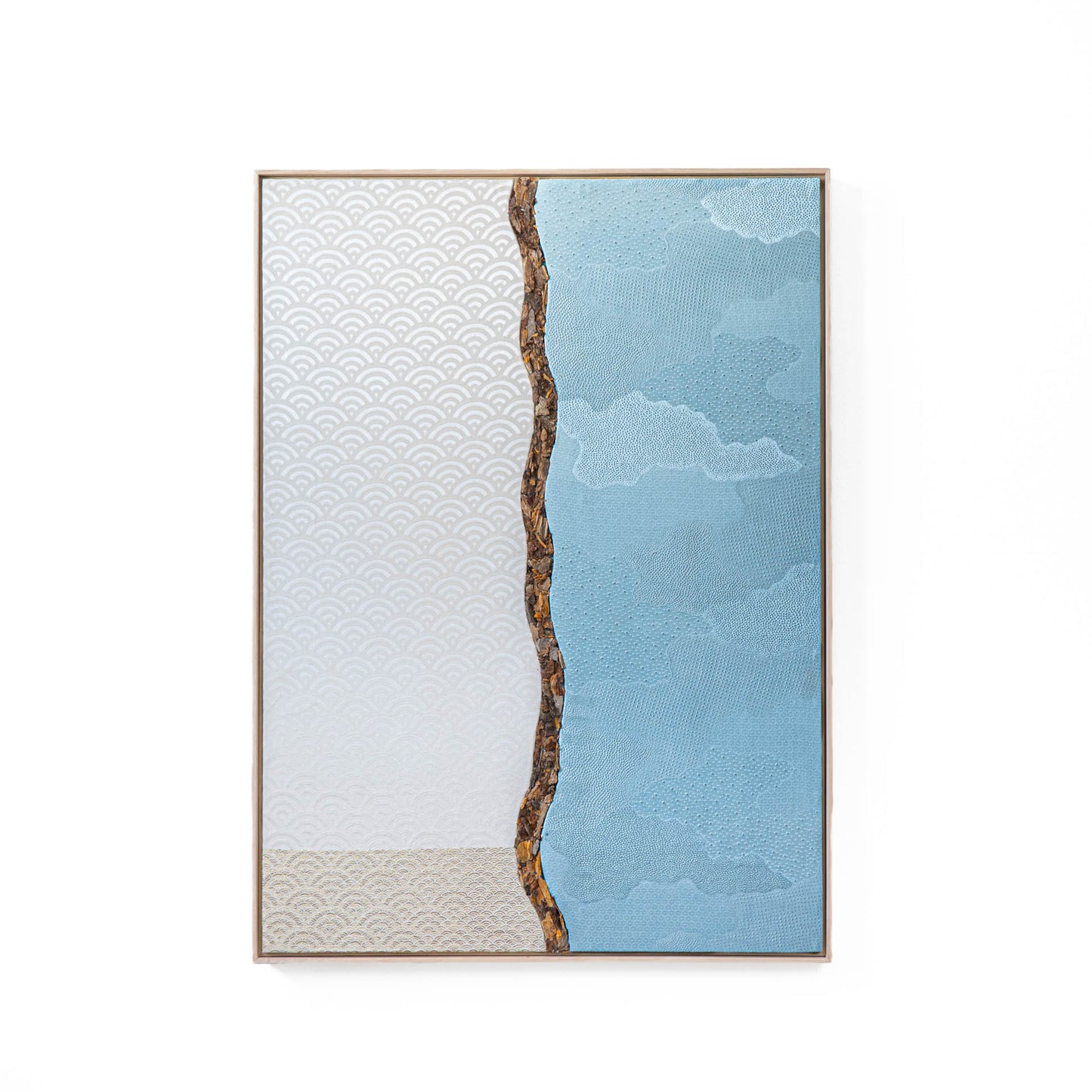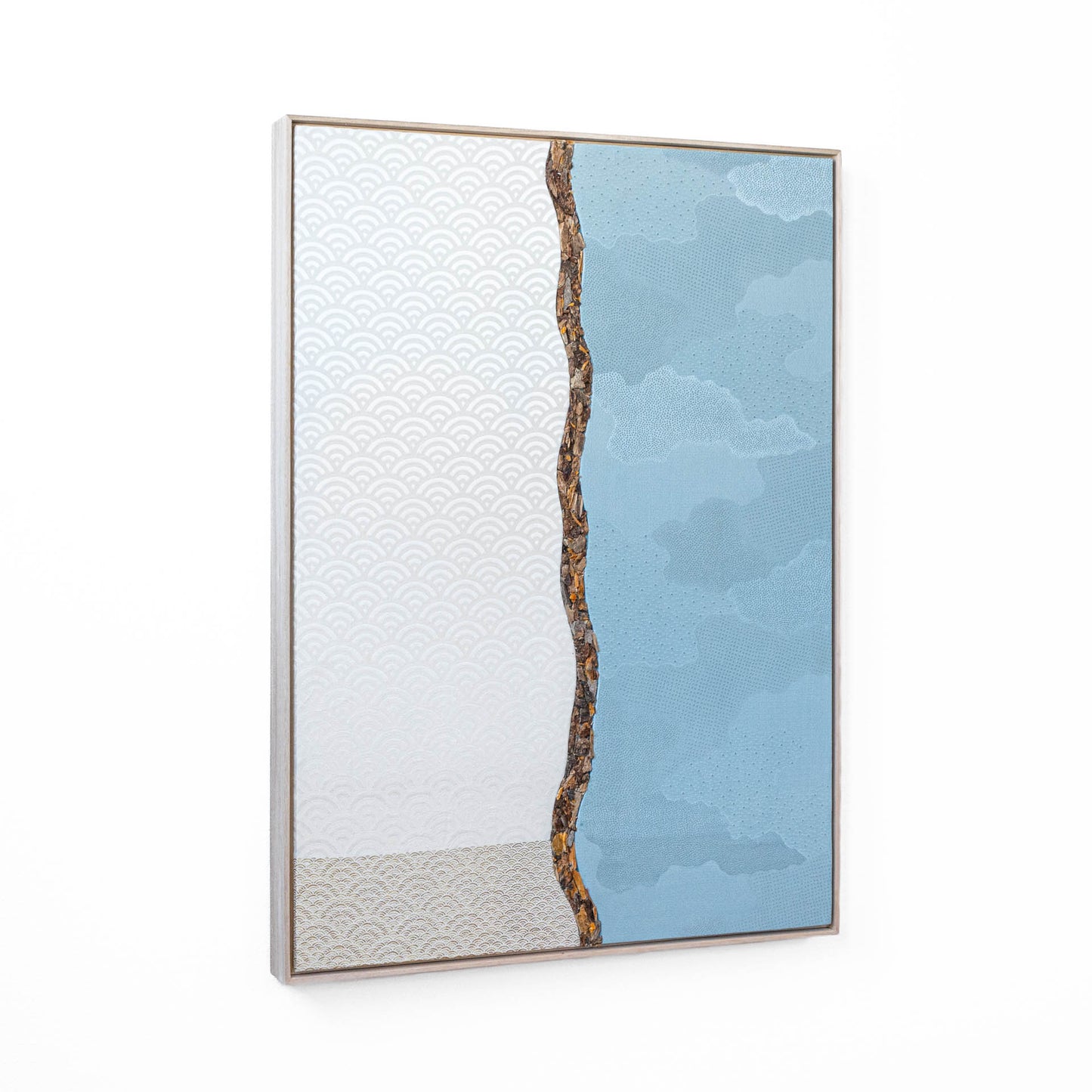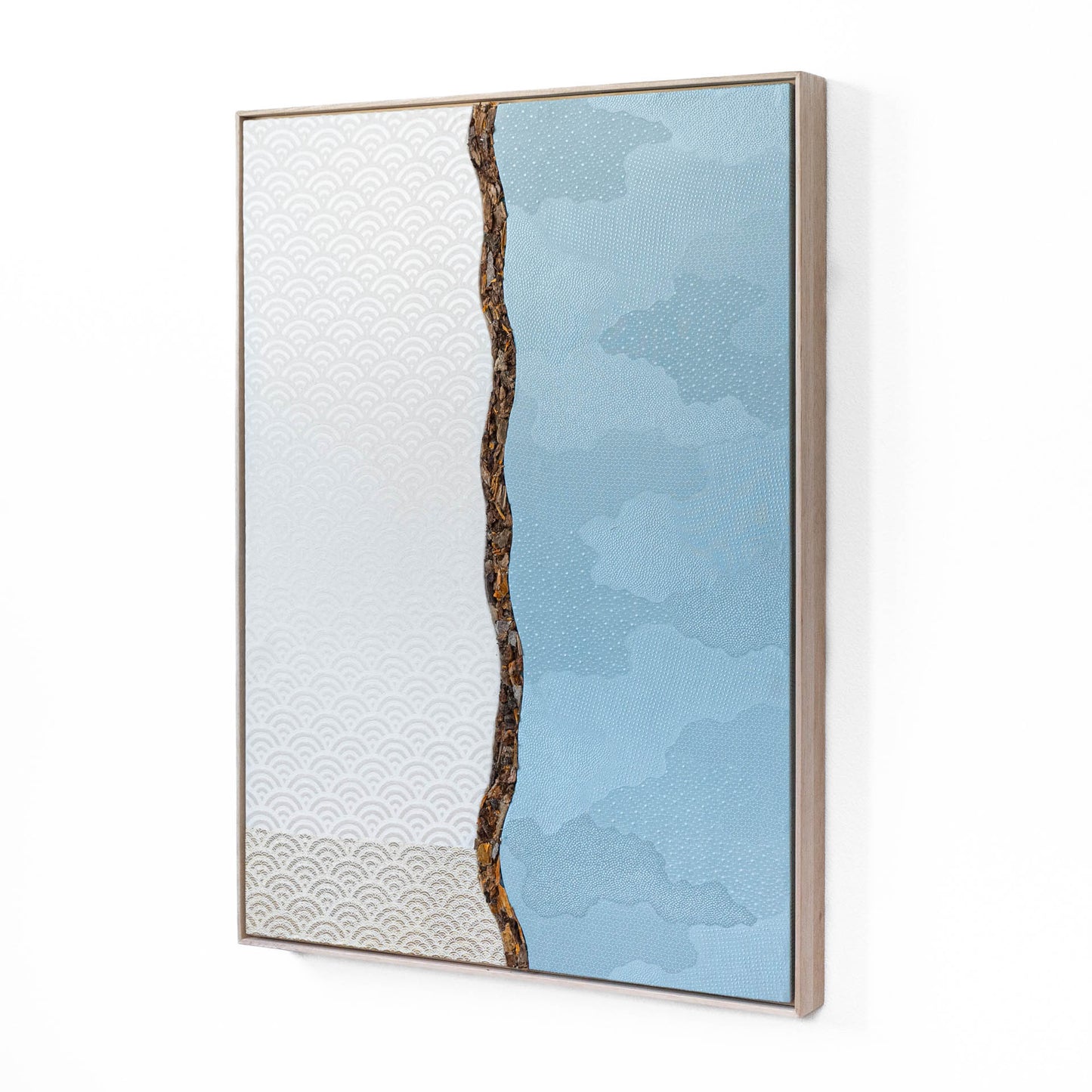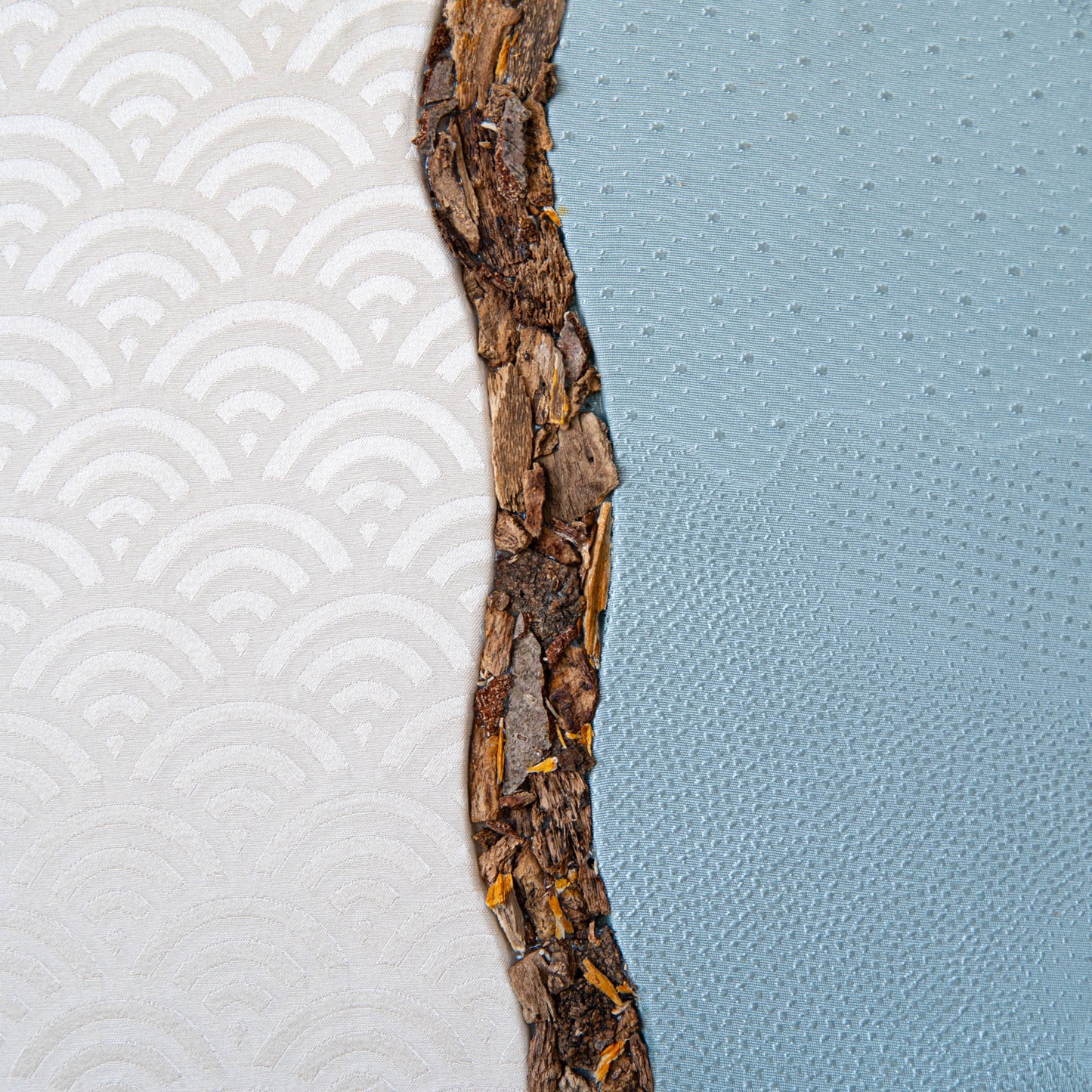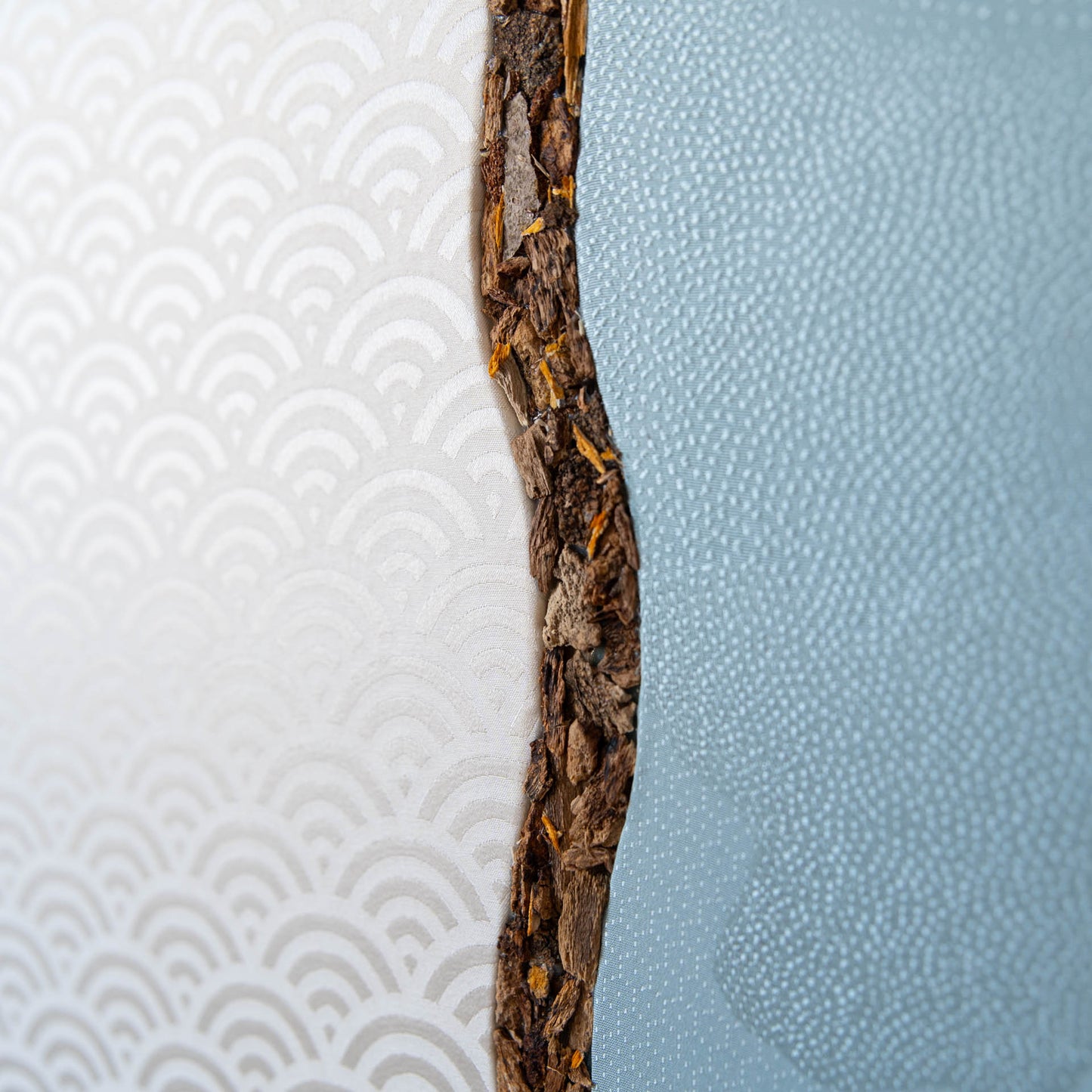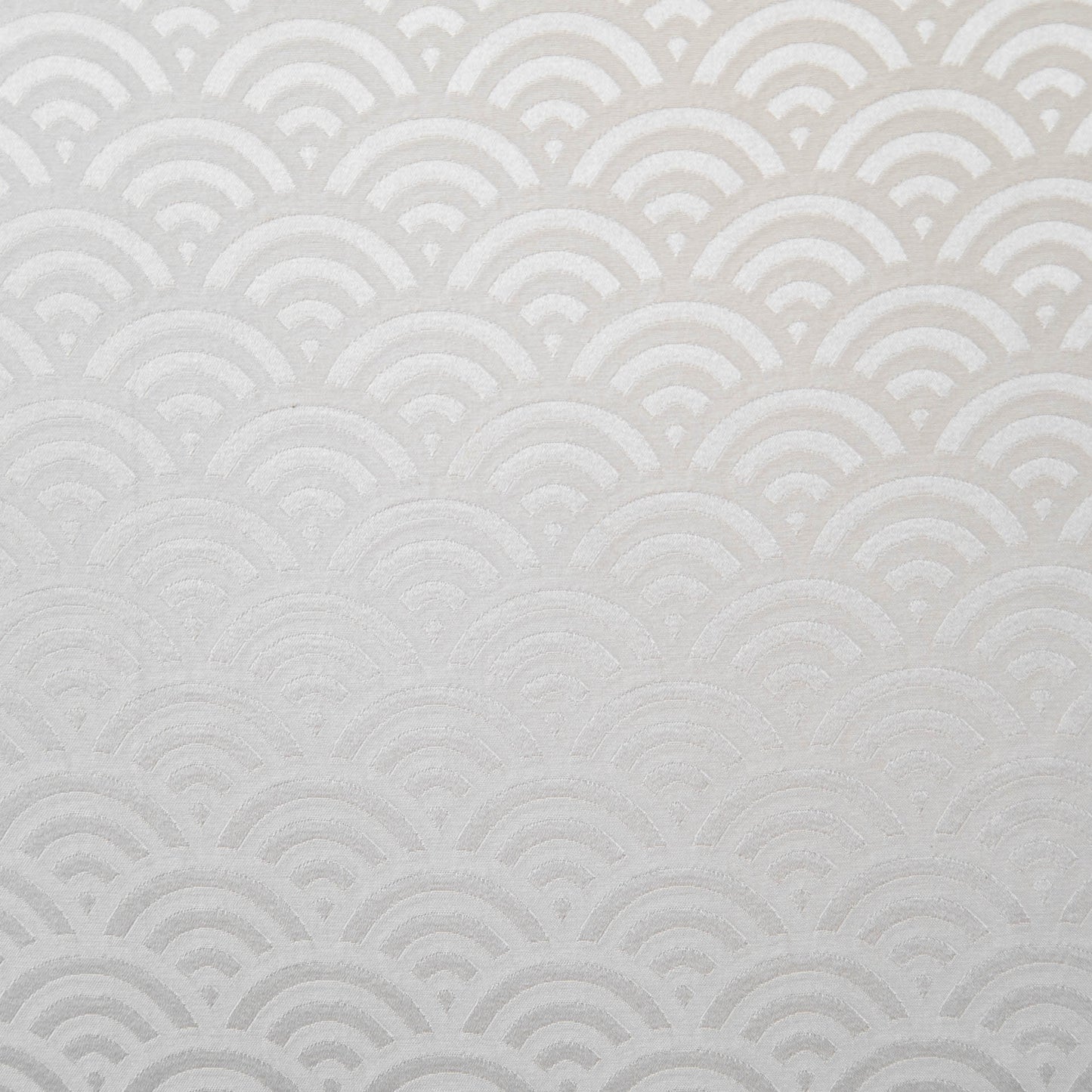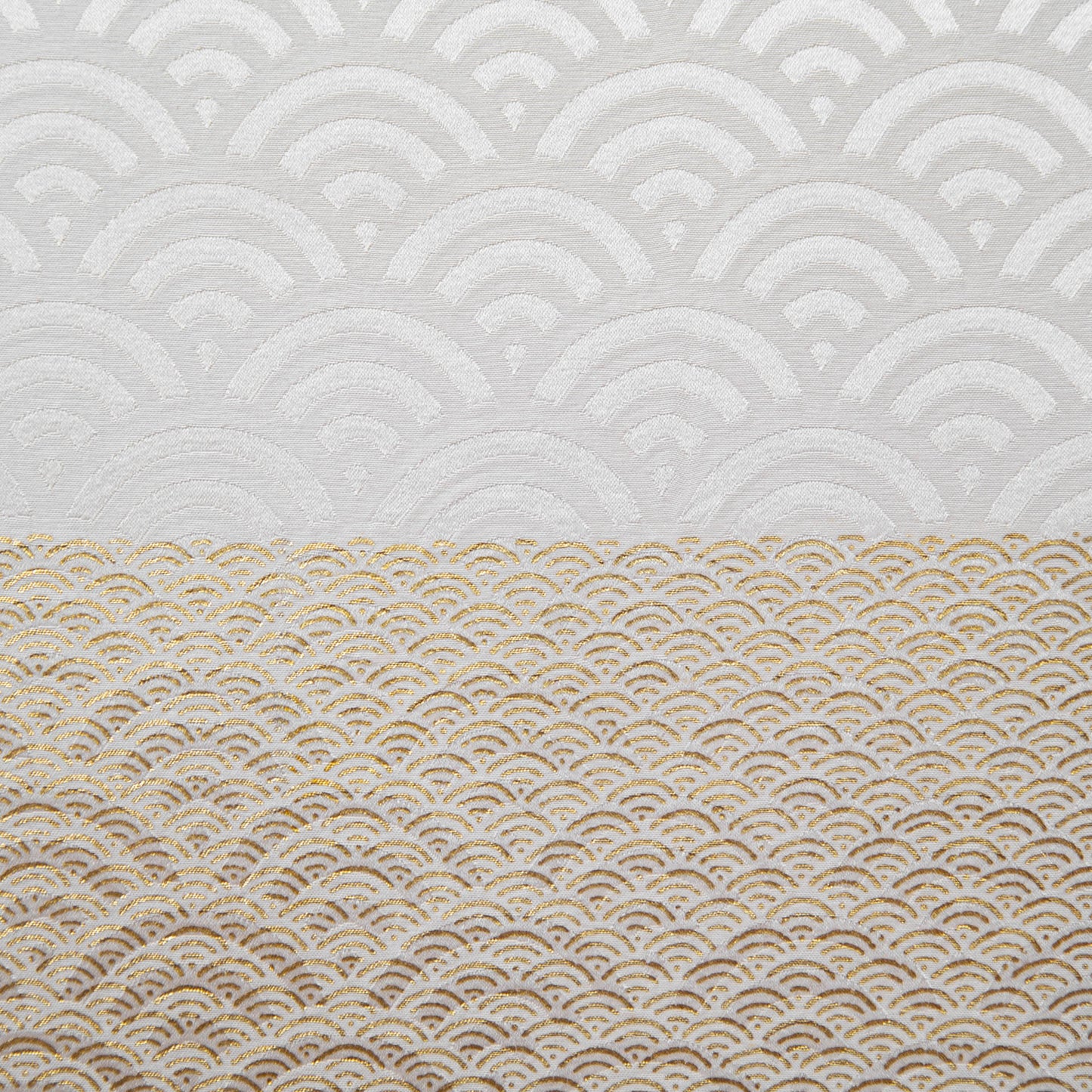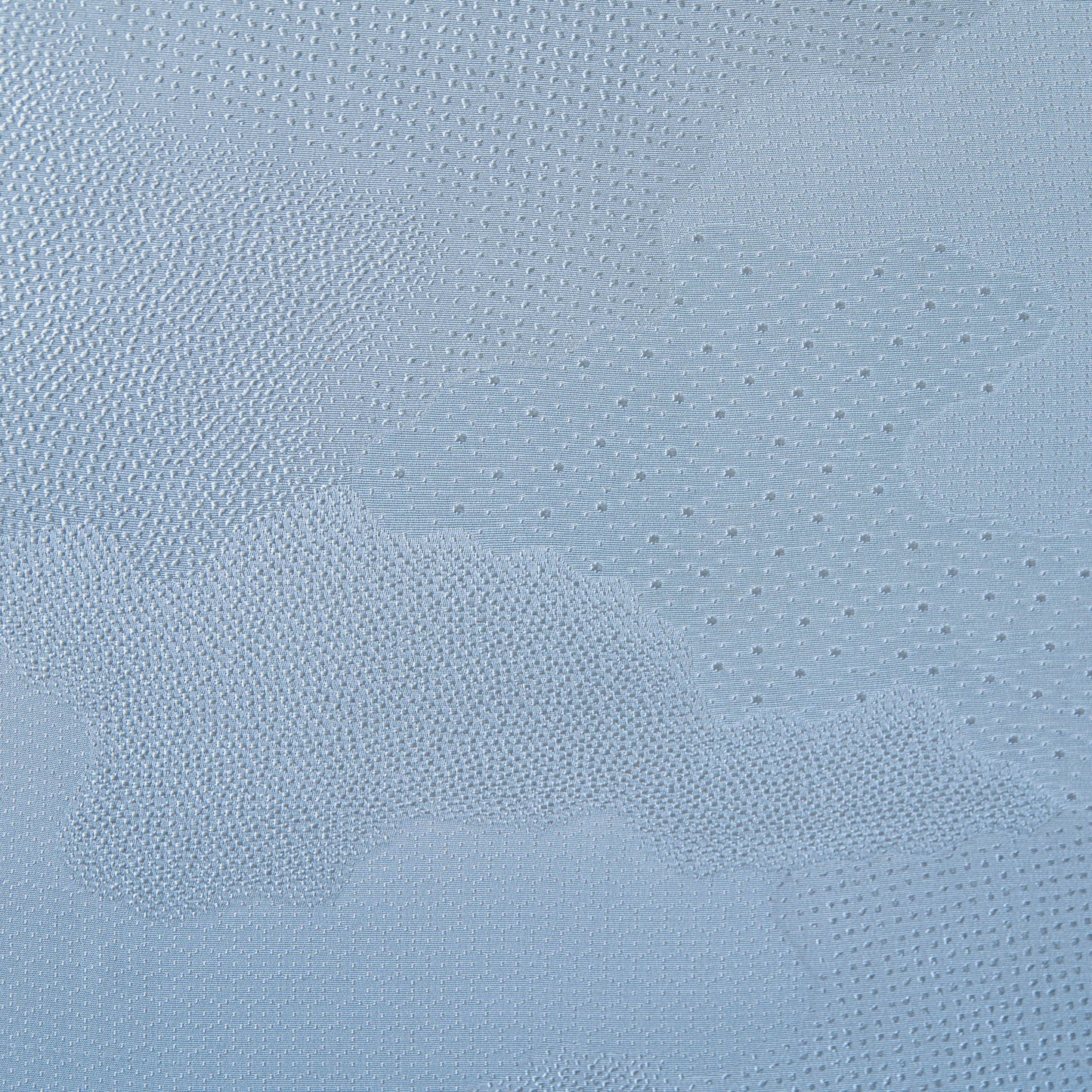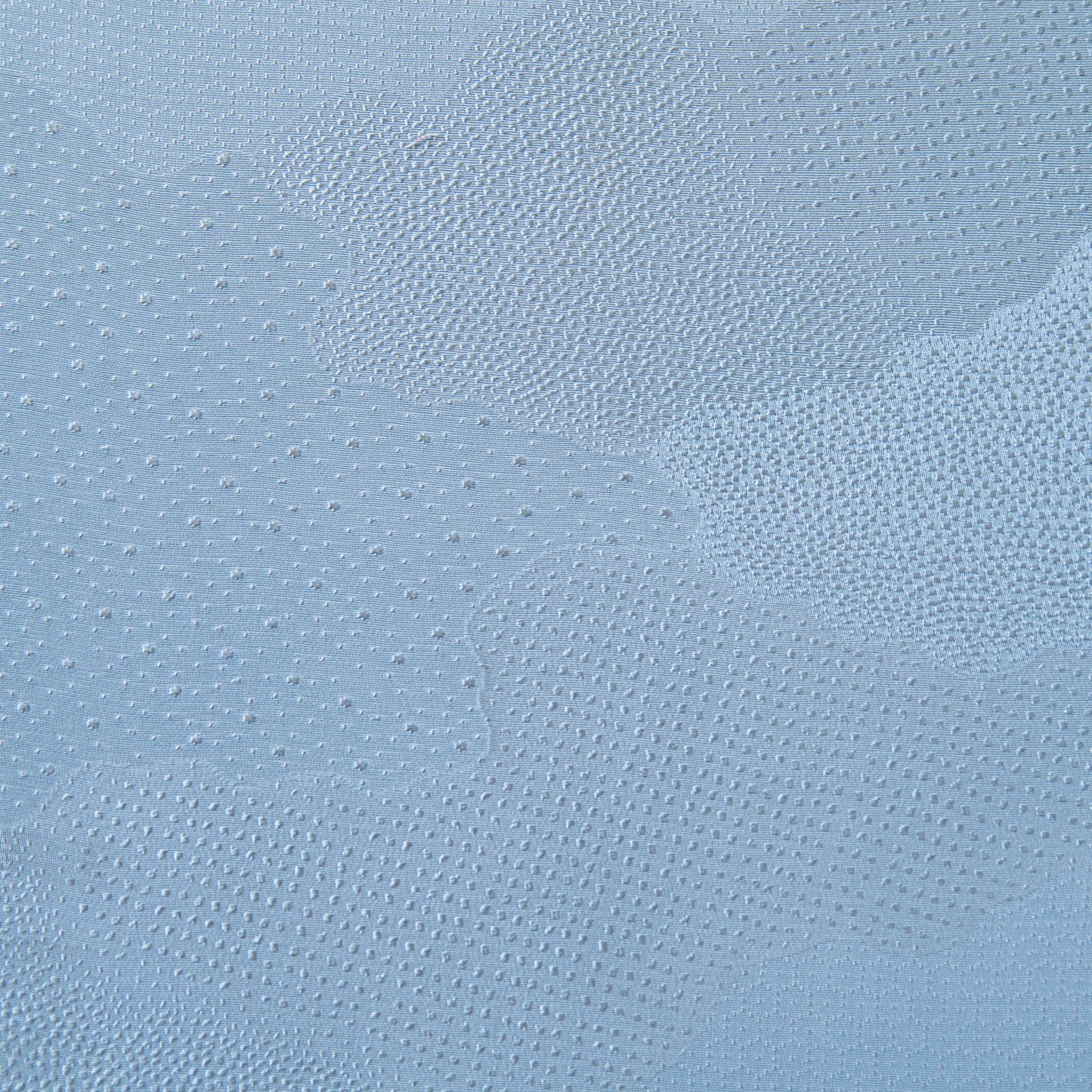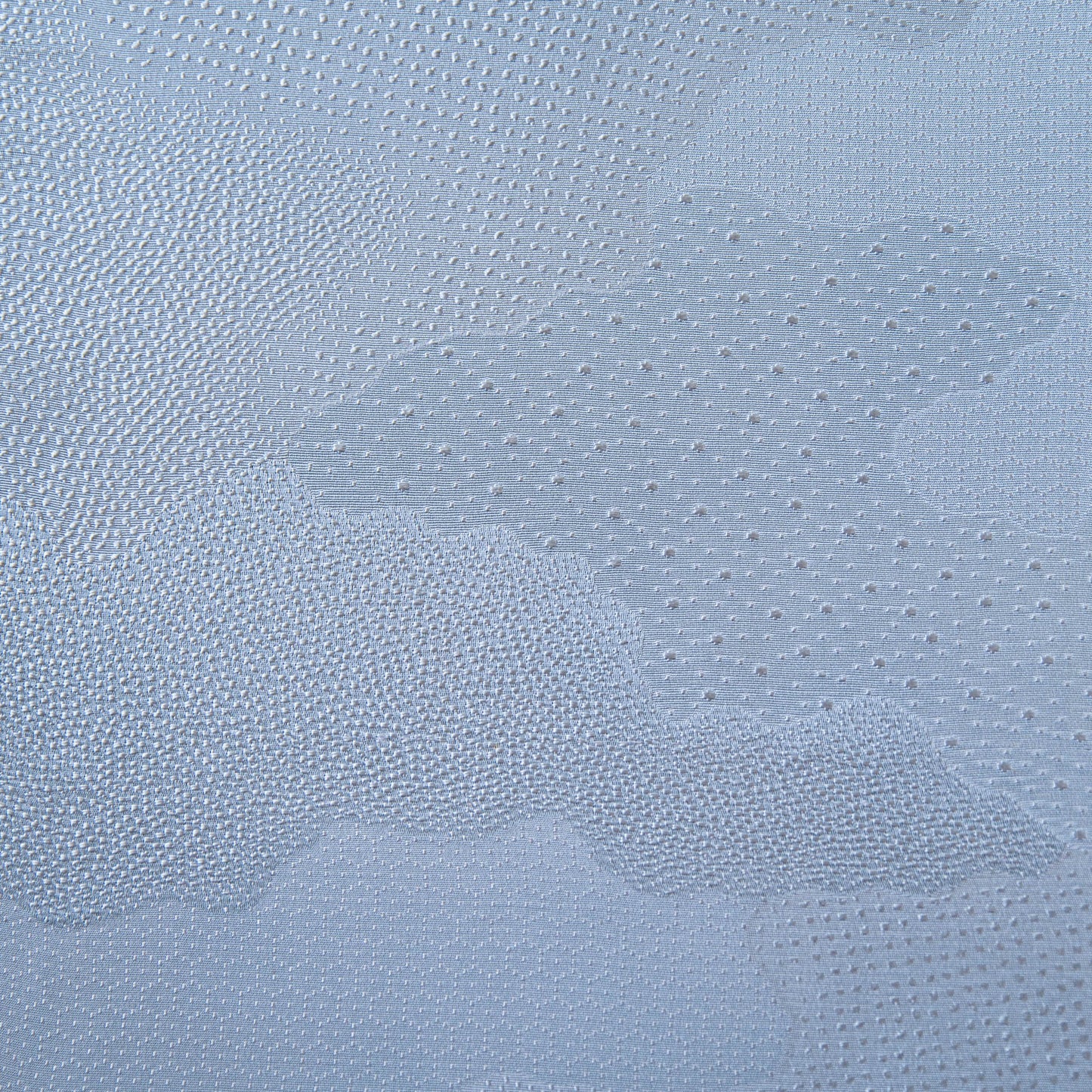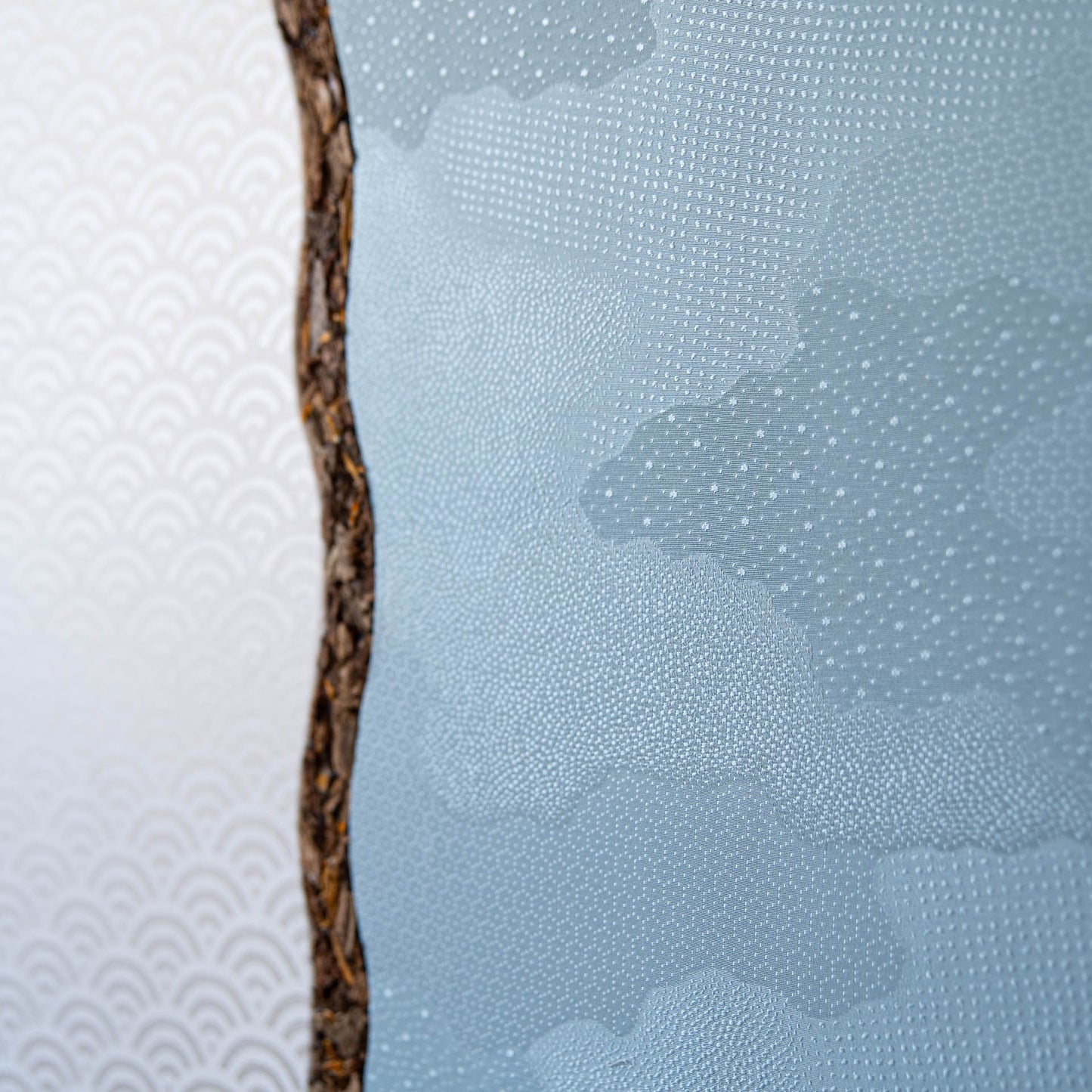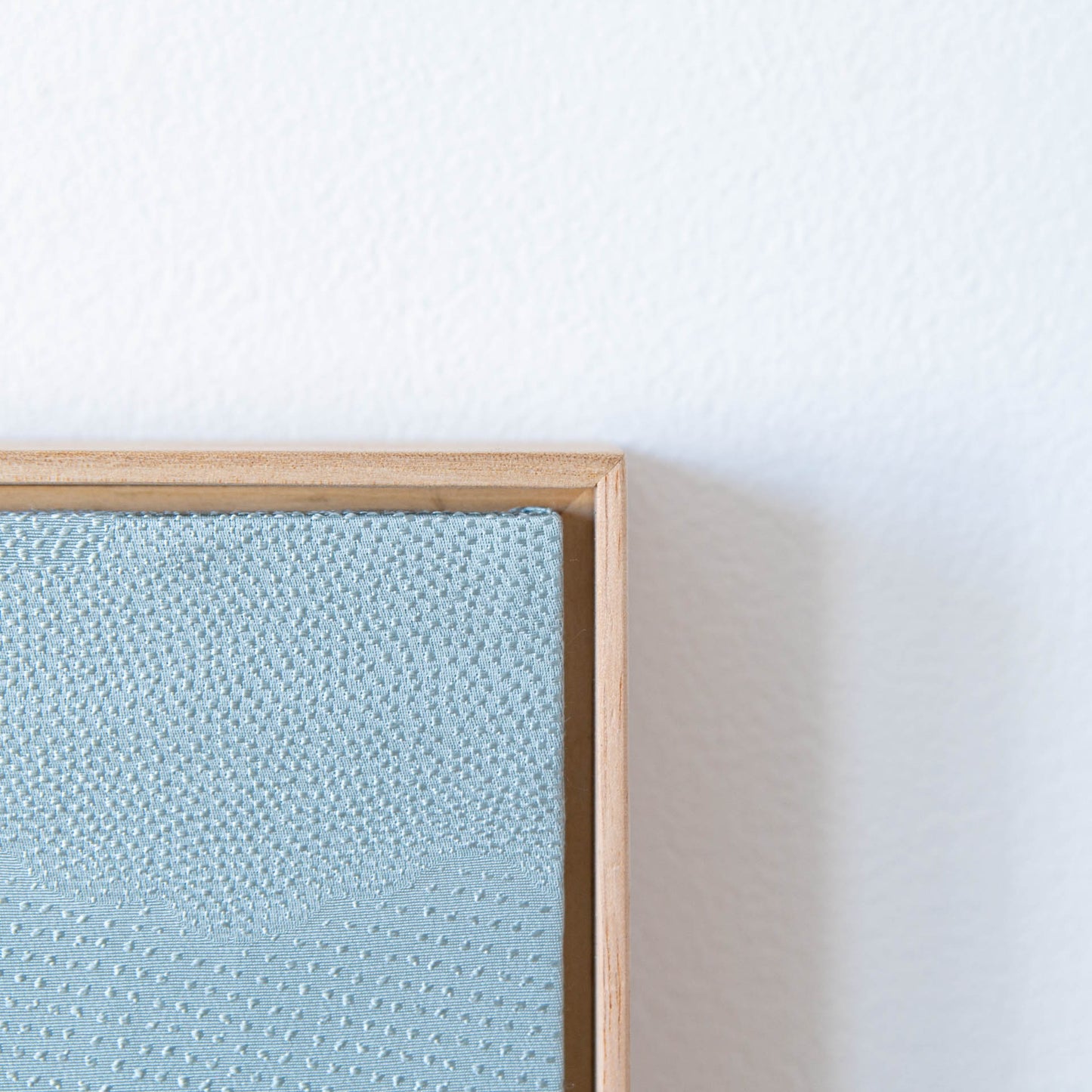Woods at Seaside
Woods at Seaside
無法載入取貨服務供應情況
Size
73cm x 53cm x 5cm
Materials
silk (outside-layer) , wooden frame (under-layer), bark (pine, oak, sawtooth oak, etc.)
Story behind the work
This work is inspired by the sea and the sky, uses tree bark as a creative point, framed in paulownia wood originally used for a kimono chest-of-drawers.
It is elegantly framed with paulownia wood, a tree closely connected to kimono culture, and is filled with storytelling and sense of luxury.
In this artwork, the aim was to capture the splendor of Japanese nature, showing the sea, sky, and forests. Traditional Japanese culture, represented by the kimono, and wood, an integral element of Japanese craftsmanship, were used to bring this vision to life.
I used two pieces of kimono that could no longer be used as clothing and bark that would normally be discarded to create the ultimate upcycled piece.
The marriage of Japanese natural materials - silk, paulownia (frame), and pine (bark for the center decoration) - and Japanese natural patterns - blue ocean waves and clouds - expresses the magnificent beauty of Japanese nature from various angles.
The central bark decoration stands out as a distinctive feature of this work. Pine, oak, and other tree barks are interwoven among the clouds and waves woven into the kimono, creating a tangible and authentic natural atmosphere.
Period / Story
The obi used in this piece was originally crafted during the late Showa period (1960-80ies).
Explanation and meaning of pattern and colors
The kimonos on this canvas have been creatively repurposed into interior artwork. The one on the left represents ocean wave pattern. The lower part is adorned with a delicate ocean wave pattern dyed in beaten gold, evoking the image of waves illuminated by the sun.
Seigaiha waves is regarded as a pattern of good fortune, embodying wishes for eternal happiness and a tranquil life for future generations.
The fabric on the right is embellished with cloud patterns woven in various techniques. Clouds, with their ever-shifting shapes and colors, have long intrigued people as signs of big events or omens.
Characteristics of the fabric
The kimono used for a part on the left has a lustrous, ivory-colored ground that serves as a backdrop for the vibrant ocean wave pattern expressed through the ground pattern. Originally intended as a festive kimono suitable for formal occasions, this piece stands out by choosing not to depict easily recognizable motifs but instead uses small embroidery on dyed gold leaf to create its unique design.On the right fabric, the cloud pattern is beautifully rendered by dyeing both the plain fabric and delicate patterns. This is achieved through the so-called "Yose-komon" technique, where each cloud is adorned with small patterns such as hail, sharks skin pattern, and other intricate details.
Edo komon, created using a refined and advanced dyeing technique that appears as a solid color from a distance, originated during the Edo period (1603-1868) and remains highly popular as formal kimono attire to this day.
About the frame
This artwork frame is crafted from paulownia wood, a uniquely Japanese material closely tied to the world of kimonos, and it serves to convey the refined beauty of Japanese nature.
Paulownia wood is known as the lightest wood in Japan, prased for its natural luster, resistance to moisture, and resilience against cracking. Since ancient times, it has been used in crafting furniture, chests, and musical instruments.
Paulownia wood is closely linked to kimono culture. During the Edo period, it became customary to store cherished kimonos in paulownia chests, which offered fire resistance and protection from moisture and insects.
Traditionally, when a daughter was born, a paulownia tree would be planted. Upon her marriage, the tree would be cut down, and the wood would be used to craft a chest for her as a wedding gift.
Following the Ansei Earthquake during the late Edo period in 1855, paulownia chests gained popularity due to their ability to withstand fires and even float in water, thereby safeguarding their contents during floods.
The decorative bark in the center of this piece is crafted from pine, a tree deeply rooted in Japanese tradition and culture.
Decoration Advice
Canvas can be displayed on a table, wall, etc. Hanging on a wall requires hooks, tacks or nails. It can also be displayed propped up on an easel. Ideal for a room makeover, housewarming gift, present, or souvenir for a loved one.
Precaution
All the works are made from real kimonos, antiques and vintages. For this reason, the fabric may have traces of long-term use and minor fabric damages. In case there are any scratches or stains, we always add a photo of the area on the item page, so please check before purchasing. Regarding precaution, cancellation and refund policy, please refer to the refund policy in the footer section of the site for information.
